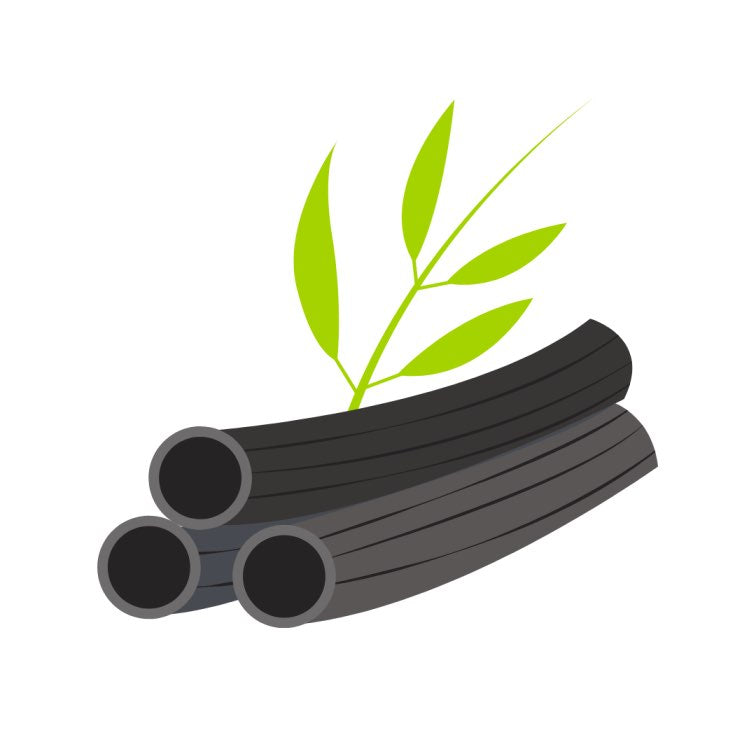Fluoride-free toothpaste has been a hot topic in recent years. But should you use it? It’s hard to say, as scientific research has found both benefits and risks associated with the ingredient. While the decision will ultimately be yours, we’ve pulled together some valuable information from both sides of the argument.
How Did Fluoride End Up in Toothpaste in the First Place?
In the early 1900s, a dentist based in Colorado Springs, Colorado noticed something with his local patients: brown staining on their teeth. Shocked by the fact that nearly 90% of the city’s local children had brown stains, he recruited another dentist and began an investigation.
What they found was that some residents had permanent teeth that calcified without brown stains, leaving young children waiting for their secondary set of teeth at highest risk. Even more surprisingly, they found that teeth that were stained brown were inexplicably cavity-resistant.
It took a trip to see similar teeth in Oakley, Idaho before the dentist made the connection to water. When brown stained teeth began emerging in other cities, the theory that it was connected to the local water source gained more traction. Nearly three decades after studying the phenomenon, the brown stains were officially linked to high levels of fluoride.
The National Institute of Health began researching this staining—also called fluorosis—in 1931. Researchers were able to find a suitable fluoride level (a very small amount) that did not cause fluorosis (staining) but did support healthier teeth. In 1944, Grand Rapids, Michigan became the first city to add fluoride to the public drinking water. Over the next decade, the local rate of dental caries (cavities) dropped by 60%.
Fluoride for Less Cavities
By the middle of the 20th century, adding fluoride to drinking water was considered a giant scientific breakthrough, turning tooth decay into a preventable disease. The naturally-occurring mineral is present in all water—and at higher levels in natural springs and some groundwater—but adding a small amount to drinking water and toothpaste has been shown to rebuild and strengthen tooth enamel.
According to the CDC, the benefits of fluoride include:
- Fewer cavities, and reduced severity when they do occur
- Reduced need for fillings and tooth removal, and the pain that’s associated with these two
So, What’s the Problem Then?
While fluoride in water has been associated with a 25% reduction in tooth decay for children and adults, there are some reasons to be wary. First, systemic fluoride uptake (ingesting it) has been associated with adverse effects, particularly neurotoxicity during development, which can disrupt or kill cells in the brain and nervous system.
Research has demonstrated that children exposed to fluoridated water early in life score lower on cognitive tests. This suggests that safe exposures are below those currently accepted or recommended for use in drinking water.
While this has set off alarms for many worried about consuming fluoride in water, it’s also why the ADA advises that fluoride toothpaste is not used for children younger than two years.
What about adults? Studies have demonstrated that fluoride can accumulate in the body, and continuous exposure can lead to damage to body tissues. There have also been links to cancer and complications with bone and skeletal tissues. Perhaps most alarming, just a small amount can be toxic—and the effects aren’t immediate, taking 20 years or more to become evident.
For these reasons, many have chosen to avoid fluoride in water by purchasing water purifiers or bottled water. Similarly, given the fact that the FDA requires all fluoride-containing toothpaste to contain a warning (“if accidentally swallowed, get medical help or contact a Poison Control Center right away”), many opt for natural, fluoride-free toothpaste.
Natural Alternatives to Fluoride Toothpaste
Fortunately, you can have peace of mind and a clean mouth! There are several fluoride-free toothpaste options that have emerged over recent years. Not only do they make use of natural, less-concerning alternatives to fluoride, but they’re often packed with natural ingredients—not those considered to be toxic, like sodium lauryl sulfate (SLS), PEGs, and artificial colors and flavors.
Ingredients to look for in fluoride-free toothpaste
Xylitol
Also naturally occurring, xylitol is found in fruit and vegetables, or manufactured from birch and beechwood plant materials. While it’s used as a natural sweetener, it’s also been found to be a promising alternative to fluoride. It has been shown to reduce cavities and even reverse those that are in their early stages. Davids Toothpaste contains xylitol.
Calcium Carbonate
Calcium carbonate is mildly abrasive, which helps with plaque removal and gently polishes away stains on the surface of teeth. While it has been studied with regard to cavity prevention, it’s often coupled with fluoride. Although, calcium carbonate has been shown to elevate natural calcium levels of the teeth and neutralize acids that lead to plaque build-up. Georganics toothpaste contains calcium carbonate.
Hydroxyapatite
Perhaps the most promising alternative to fluoride, and also the newest to receive attention is hydroxyapatite. It has been proven as effective as fluoride in remineralizing caries and preventing demineralization. This Davids Sensitive+Whitening toothpaste contains hydroxyapatite.
Final Thoughts on Fluoride-Free Toothpaste
Because it’s so ubiquitous in our world and found in our drinking water, it’s no wonder why many people like to make choices to avoid fluoride whenever possible. Whether you feel more comfortable with fluoride-free toothpaste or like to stick with the original, Green Eco Dream can help with all of your sustainable oral care needs!
Check out our Sustainable Oral Care below and use code BLOG10 to save 10% on your first order!
If you enjoyed reading this Blog, please share it, and help us get the word out together. Thank you! 😊


















